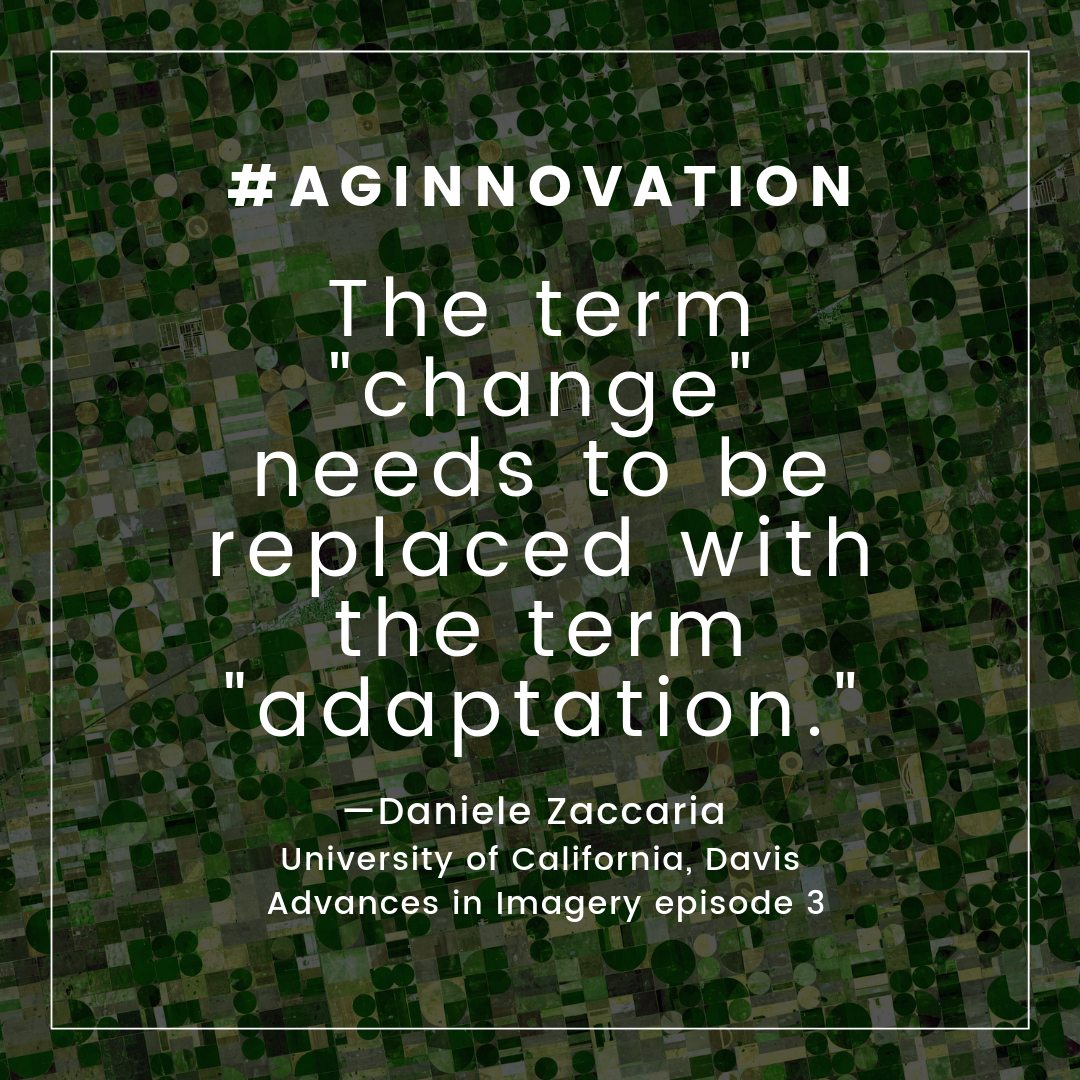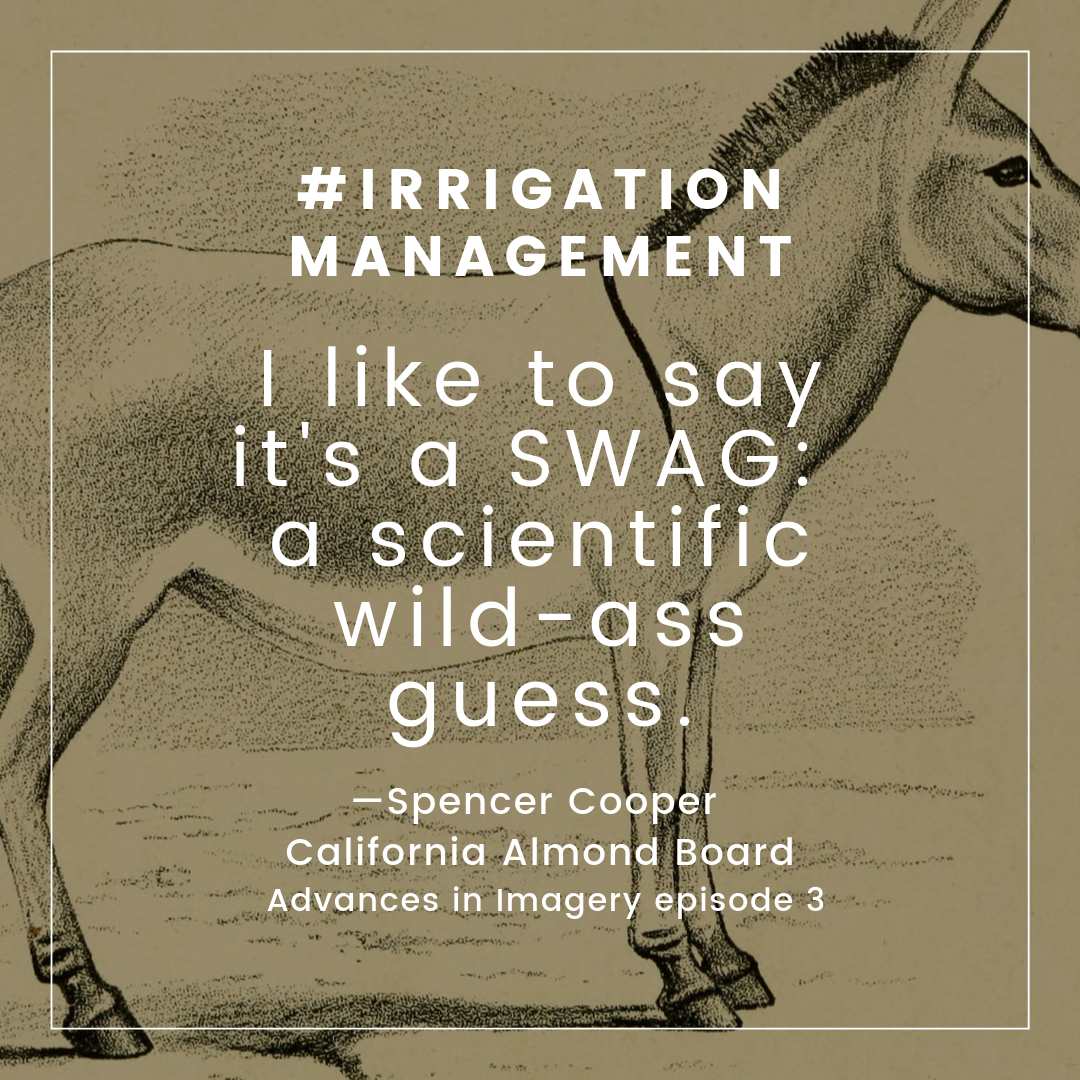
Winter weather across much of the country this year was anything but average. How should growers adapt their irrigation program to reflect that? On episode three of Advances in Imagery—our new audio series produced in partnership with Malcolm Media—we put that question to two guests who think a lot about water: Spencer Cooper of the Almond Board of California and Daniele Zaccaria of the University of California, Davis.
We started the episode talking California water conservation—and while there's no shortage of controversy on the topic, Cooper emphasizes that everyone generally agrees on the basics. “We understand we are growing a valuable food and energy source," he says, and being responsible with that resource is as important to the health of the industry as it is to the environment. “All of agriculture can be solutions to the problem we have now."
For Cooper, the biggest lessons learned in many years of helping growers dial in those solutions have been to avoid overcomplicating management programs and invest time in getting familiar with the tools you use. “We have systems out there that are like Ferraris—but we only know how to drive a Honda Civic in town.” he says. When working with growers, he's less inclined to insist on cutting-edge everything than to ask about some big-picture basics: What maintenance needs to happen? Is the system truly running at its full potential?

UC Davis water management specialist Daniele Zaccaria joined us from Greece, where he was attending a conference on management practices for wine grapes. We asked him how shifting weather patterns might alter growers' planting choices in the future. His predictions? "Current regulation, as well as the increasing variability of weather, will interact in a way that there will be some shift from a permanent crop into vegetables and more field crops," he says. "Probably there will be some return to surface water and irrigation use because groundwater is such a big challenge in California.” In such a challenging environment, Zaccaria says, the ability to match management programs to rapidly changing conditions is what will set successful operations apart. "We should pursue dual irrigation systems that allows growers to adapt," he says.
For more information on the series, visit advancesinimagery.com. If you've already listened in, check your email for a link to a short quiz that will earn you a CCA credit in soil and water management. Most importantly: we want your feedback! Is there a topic you're interested in covering in future episodes, or someone you'd like to hear on the air as our next guest? Leave us a comment and let us know.
Irrigation Precision agriculture Vineyards Tree nuts Advances in Imagery

